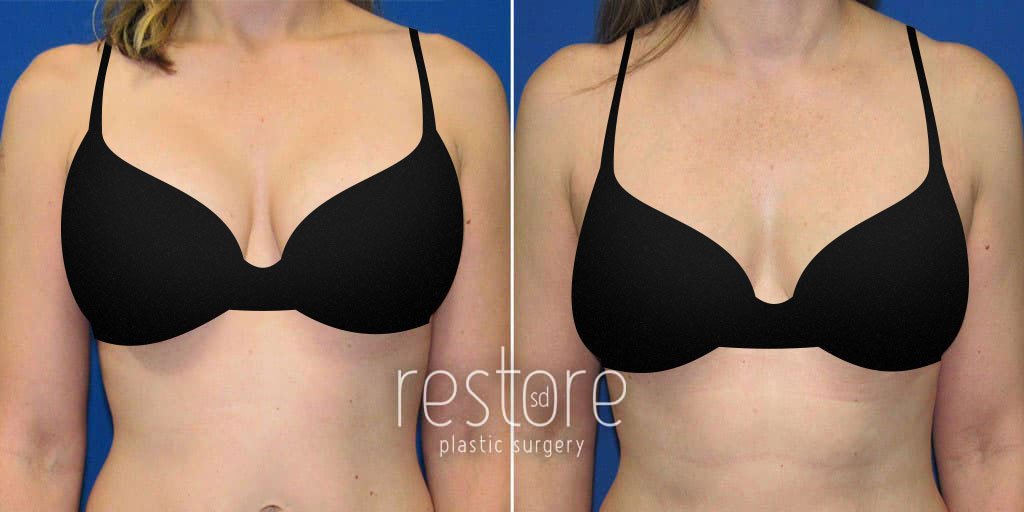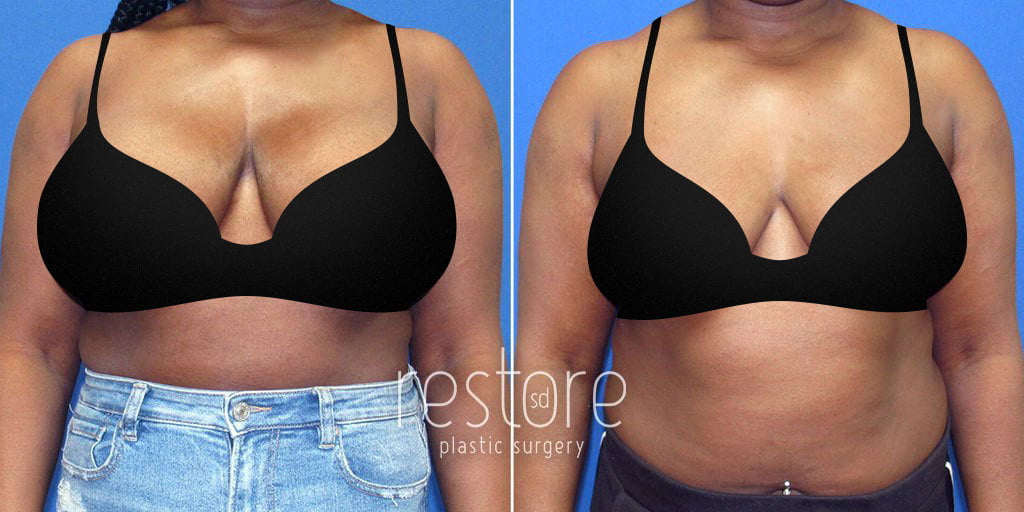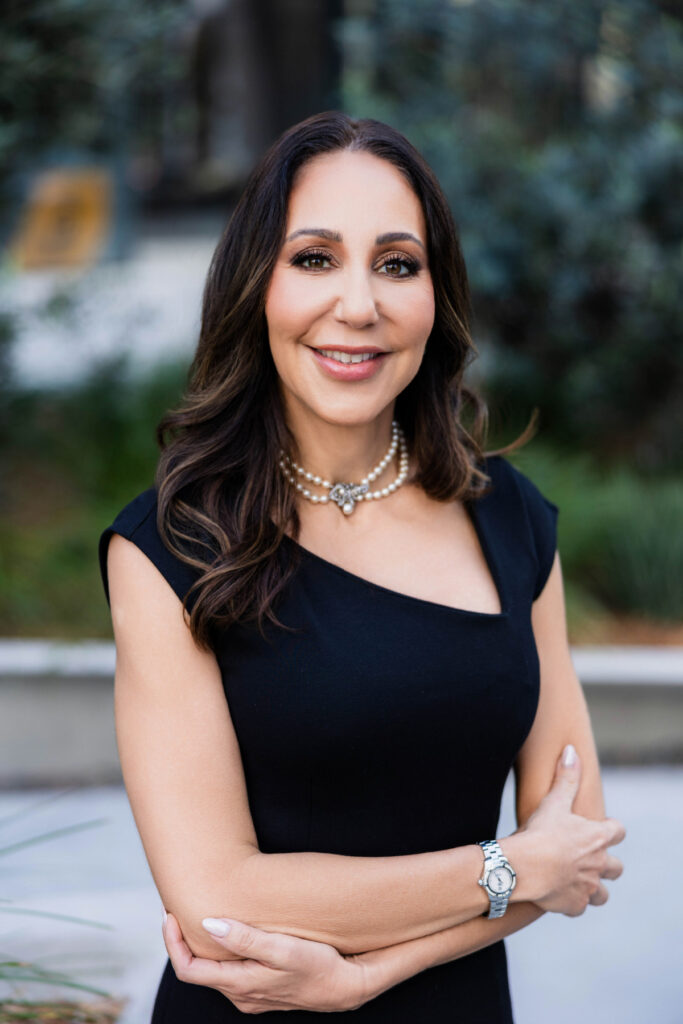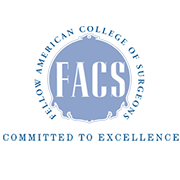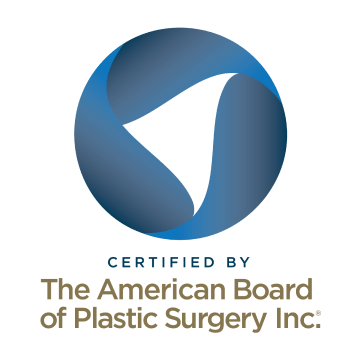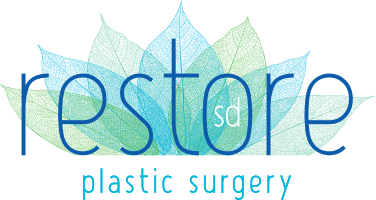Breast Implant Removal San Diego – Explant San Diego
If you are ready to have your saline or silicone breast implants removed, you deserve safe options—and a board-certified plastic surgeon who knows their stuff and understands your priorities. San Diego female plastic surgeon Dr. Katerina Gallus has over 20 years of experience helping patients, and she is happy to learn about your concerns and educate you on your options in a consultation.
What is breast implant removal surgery?
Breast implant removal, also known as explant or explantation, is a surgery performed to take out breast implants that were placed in a previous breast augmentation surgery. Breast implant removal may also involve a capsulectomy, or procedure to remove some or all of the scar tissue that encircles the breast implant. If you need or want reshaping in order to get an attractive result, Dr. Gallus can combine this procedure with breast lift or fat grafting to the breasts for a fully personalized, natural-looking outcome.
Am I a good candidate for breast implant removal?
Chances are, now is a good time for you if you agree with the following statements:
- You have realistic ideas and expectations of what can be accomplished with this procedure (we’ll go over this in detail at your consultation, and discuss any additional procedures like a lift)
- You may have experienced breast implant rupture, capsular contracture, or health problems related to your implants
- Your schedule can accommodate 7-10 days away from work
- You are prepared for a different aesthetic from what you had with breast augmentation
- You do not use any nicotine products
- You do not take blood thinning medications
Additionally, Dr. Gallus will evaluate your health status to be sure that you can safely undergo surgery with general anesthesia at this time.
With over 20 years of experience, Dr. Gallus is a board certified plastic surgeon and Castle Connolly Top Doctor. She will partner with you to develop a tailored surgical plan that prioritizes your safety and results.
Why patients choose implant removal
The decision to remove your breast implants is a uniquely personal one. Know that you are not alone! It is normal for women to remove their implants for both aesthetic and medical reasons. Dr. Katerina Gallus and our team are here to help with your concerns and work together to develop the best plan that meets your needs. Here are some of the reasons why women choose to have their implants removed:
- Personal preference: Some women no longer like the feel or look of their implants or find that their implants no longer match their lifestyle or activity level.
- Breast implant rupture: When a rupture occurs, some women prefer to remove rather than replace their implants. (If saline breast implants rupture, they visibly deflate; if a silicone implant ruptures, this is usually detected by a routine MRI or ultrasound scan.)
- Capsular contracture: In this condition, the capsule around the implant thickens and calcifies irregularly, resulting in tightened, hardened breasts and an unnatural appearance. In most cases, treatment requires removal or replacement. Research suggests capsular contracture may be related to a biofilm forming on the implant.
- Concerns about breast implant associated illness: For some women, concerns about the potential diagnosis of breast implant associated anaplastic large cell lymphoma (BIA-ALCL) or breast implant illness (BII) symptoms may lead them to have breast implants removed.
Whatever your reasons may be, if you are thinking about getting an explant, it’s a great time to sit down with a board-certified plastic surgeon. Dr. Gallus will meet with you in a consultation and answer questions, explain options like breast lift (where appropriate), and empower you with the information needed to decide: the options that are best for you, the outcome you can expect, and safety and risks.

“I recently had severe BII, and I needed surgery quicker than usual due to declining health. Restore SD Plastic Surgery with Dr Gallus was one of my best decisions! After going to several doctors in the area, her office was professional, warm, and welcoming; she answered ALL my questions and made me feel good about the procedure under such delicate circumstances. She was able to get me on the books at a reasonable time; my surgery was a success, the recovery excellent, and all the follow-ups after! I cannot thank Dr Gallus and her staff enough for my new chapter in life, and I feel so much better after the surgery! I am pleased with my results a year later! I will always recommend her and her office for any cosmetic treatments!”
—Google Review for Dr. Gallus
Curious about breast implant removal? In this episode of All the B’s, Dr. Kat Gallus and scrub tech Bri dive into the rising trend of explant surgery, the debate around breast implant illness, and what recovery looks like. Tune in for expert insights, celebrity stories, and everything you need to know about navigating your own explant journey.
Your breast implant removal consultation in San Diego
Our goal is to help you feel comfortable every step of the way—even before you step foot in our San Diego office for a consultation. Here’s what happens during a typical consultation with Dr. Gallus:
- When you arrive, we greet you and make sure that we have all of your intake information, including your complete medical history. We email these to you ahead of time so that you complete our digital forms at home‚ with your information at hand. We will also request a recent mammogram if you are over 40 or have a strong family history of breast cancer.
- After Dr. Gallus reviews your medical history and any medications you take, she sits down to talk with you face to face. This is an open conversation, allowing you to share any symptoms or concerns you have and get Dr. Gallus’ expert input on tailoring the cosmetic surgery for your body. Another clinical staff member is present throughout the physical exam to ensure your comfort.
- We take digital images of your breasts using our Vectra 3D system. This state-of-the-art camera and software renders possible outcomes and helps us to discuss what your breasts may look like after surgery, as well as the aesthetic you could get with additional procedures like a lift (many of our patients consider a lift) or fat transfer.
- Finally, after working out the procedure(s) that could meet your goals, you meet with our stellar patient care coordinator to go over a comprehensive, personalized fee quote that covers costs.
If you’re not ready to book a surgical date yet, you are welcome to return for a second consultation to ensure you feel fully informed about your surgical plan options and empowered in your decision.
Will health insurance cover breast implant removal?
Whether or not insurance will cover the cost of implant removal boils down to whether they deem it to be an elective procedure or not. In most cases it is considered to be elective, but if it’s part of cancer treatment or the first step in a mastectomy, it may very well be covered. Always check with your insurance carrier in advance if you have questions about coverage.

“I knew I wanted to remove my breast implants but it took several consults to find the right team to walk me through the decisions and process. From the first consultation to my post op appointments, the team at Restore has been awesome. As an out of town patient, they have been attentive and accommodating and I can say it’s worth the 3 hour drive… Dr. Gallus listened to my goals and gave me beautiful results and I know they will only get better as my healing continues.”
—Hilary, actual patient of Dr. Gallus
What happens during removal surgery?
This surgery is performed in a fully Quad A-accredited (formerly AAAASF) ambulatory surgery center or hospital on an outpatient basis, meaning that you will go home to recover after surgery. Here’s what happens on the day of your procedure:
- When you arrive, Dr. Gallus will review your procedure plan with you, mark planned incisions on your breasts, and answer any remaining questions you have.
- Surgery is performed under general anesthesia, meaning that you will be completely asleep for its entirety (usually between 1 and 3 hours).
- Breast implants are removed and the capsule may be removed all or in part, depending on the tailored surgical plan you established in the consultation. This may include a breast lift or fat grafting to restore a natural-looking breast shape and volume.
- The surgical area is closed with absorbable sutures (you won’t need to have them removed later).
- Surgical drains may be placed at your incision sites. Advances in techniques over the last few years now allow many patients to enjoy a drain-free post-op period, but each surgery is unique, and Dr. Gallus wants the best and safest outcome for you. We try our very best to do the surgery without them, yet we also don’t hesitate to use them if it is the best and safest course of action to optimize your result and safety.
- We apply surgical dressings and place you in a post-surgical compression garment/ compression bra, which helps to ensure proper healing. You will wear this bra or a similar one for the next few weeks.
After your breast implant removal surgery is completed, you will be able to go home with a responsible adult. Ideally, this loved-one or friend will be able to stay with you during the first few days after surgery. Some postoperative surgical discomfort is to be expected, just as with breast augmentation, and you will be prescribed pain medication to help ensure a comfortable experience. Initially, the area around the nipple and most of the breast skin is usually numb, but, for most patients, sensation gradually returns over the next few months.
Video: Breast Implant Removal Under Local AnesthesiaVideo transcript
“Some patients are interested in breast implant removal under local anesthesia. The key difference between this and general anesthesia is that, under local anesthesia, you remain awake for the procedure. It’s a suitable option if you seek a quick recovery. This approach is applicable if your breast implants are not encapsulated, textured, or ruptured. While the capsule removal isn’t possible under local anesthesia, the procedure to remove the implant itself is fast. If you’re considering this option, please reach out to us at Restore SD Plastic Surgery for your consultation.”–Dr. Katerina Gallus
Most women can return to work after 1-2 weeks. Depending on the details of your surgical plan, recovery can be similar to or slightly longer than that of augmentation. Normal daily activities like showering, eating and light activity such as walking can be resumed within 24 hours after surgery. Some postoperative swelling is normal and generally resolves within the first 4 weeks after surgery.
You will not be able to lift anything heavier than 10 lbs. or perform strenuous activities for 2 weeks following surgery. You cannot drive while taking narcotic pain medication, so plan to have a friend or family member drive you to and from appointments during the early recovery period. You will have follow-up with Dr. Gallus and will be guided back to your usual activities.
You should refrain from intense physical activity for 4 weeks, as getting too active too soon can result in a seroma or other complications. Complications can easily occur from getting too active too early, so select a surgical date that allows an appropriate amount of time to heal and gradually return to more vigorous activities.
Video transcript
“Making the decision to have your implants removed is an important first step, but it is important to consider recovery afterwards. So, a lot of this will depend on the type of surgery you have and whether it includes a lift or a fat transfer. Recovery is different for every person, but in general, I recommend having two weeks of no raising your heart rate or blood pressure and no heavy lifting.
If you have an extensive capsulectomy, which is the removal of the implant capsule and/or a lift, you might find that your recovery is more like three weeks. If you choose to have a fat transfer, many women find that the areas of donation, where we’re taking that fat from, whether it be abdomen or thighs, can be sore for up to four to six weeks. So, as with any cosmetic surgery, it’s super important to plan for your recovery as part of the whole process.
After surgery, it’s important that you don’t lift anything heavier than your purse. So, if you have young children, it’s important to have help and support taking care of them after surgery. It’s also important to know that you probably won’t be able to drive for a few days after surgery or do things like walking a large dog or other activities of daily living.” -Dr. Katerina Gallus, RestoreSD Plastic Surgery
How soon can I travel?
Having surgery means a commitment to appropriate downtime. We recommend scheduling your surgery at a time that allows enough time to recover and gradually return to your normal activities. Flying, driving long distances, or leaving the immediate area are not recommended until you have been cleared by your surgeon. If you have specific travel needs or require advice for emergency travel soon after a procedure, please let us know and we will be glad to discuss the details with you.
Post-operative scars & care
Your scar will go through changes during the healing process, and your Restore SD team will continue to be here to help you manage this. Surgical scars take about 9 to 12 months to fully mature. At your one month post-op appointment, we’ll send you home with a tube of scar gel (included in your surgical package) and advise you to avoid the sun, wear sunscreen, and practice scar massage. To further refine your results, we also offer a series of fractionated laser treatments—the same laser used in our medical spa for facial anti-aging—to minimize scars’ appearance.
Breast Implant Removal Videos
Breast Implant Removal Breakdown
What will I look like after breast implant removal?
Breast Implant Removal: Should You Remove the Whole Capsule?
Can I deflate my saline implants before breast implant removal?
Breast Implant Buzzkill: Breaking Down Capsular Contracture
Breast Implant Illness: Are Your Symptoms Really from Implants?
Biggest Fears About Anesthesia
Before You Book: What to Expect During a Plastic Surgery Consultation
- Key Benefits
- Glossary
- Alleviates physical discomfort
- May help to resolve health concerns
- Can correct cosmetic issues, such as rippling, asymmetry, or dissatisfaction with implant size or appearance
- Areola – The pigmented area surrounding the nipple; in the context of breast implant removal, the areola’s appearance may be a consideration in the surgical approach, especially if an areola reduction or lift is performed simultaneously.
- Breast Implant-Associated Anaplastic Large Cell Lymphoma (BIA-ALCL) – A rare and treatable type of lymphoma that can develop around breast implants, leading to the recommendation of implant removal for affected patients.
- Breast Implant Illness (BII) – A term used by some to describe a variety of symptoms they believe are directly linked to their breast implants, including fatigue, chest pain, hair loss, and headaches, among others.
- Capsular Contracture – A complication of breast augmentation where scar tissue forms around the implant, causing the breast to harden and sometimes resulting in discomfort or an unnatural appearance, which can necessitate implant removal.
- En Bloc Removal – A surgical technique where the breast implant and the surrounding scar tissue capsule are removed together as one unit, often preferred to minimize the risk of contamination to the rest of the body.
- Explant Surgery – The procedure for removing breast implants, which may also involve the removal of scar tissue and can be combined with other procedures to improve breast appearance.
- Implant Rupture – A breach in the outer shell of a breast implant, which can occur in both saline and silicone implants, sometimes necessitating removal or replacement.
- Incisions – Surgical cuts made during the procedure to remove breast implants; the location and length of incisions can vary depending on the specific technique used and whether additional procedures, like a breast lift, are performed.
- Mastopexy – Also known as a breast lift, a procedure that may be performed in conjunction with implant removal to raise and firm the breasts by removing excess skin and tightening the surrounding tissue.
- Recovery Time – The period required for a patient to recuperate after breast implant removal surgery, during which activities may be limited, and symptoms such as swelling and pain decrease as the body heals.
- Saline Implant – A type of breast implant filled with sterile salt water; if these implants leak or rupture, the saline is absorbed and naturally expelled by the body.
- Silicone Implant – A type of breast implant filled with silicone gel that feels more like natural breast tissue; if these implants leak, the gel may either remain within the implant shell or escape into the breast implant pocket.
- Textured Implant – A breast implant with a rough surface designed to minimize movement within the breast pocket; however, it has been associated with a higher risk of developing BIA-ALCL compared to smooth-surfaced implants.
- Total Capsulectomy – A procedure that involves the removal of the breast implant along with the entire capsule of scar tissue surrounding it, often recommended to address capsular contracture or to ensure complete removal of all implant materials.
- Ultrasound – A diagnostic imaging technique used to monitor breast implants and check for abnormalities such as rupture or the development of fluid collections around the implant.
How do I choose a surgeon?
It is important to ask if your surgeon is board certified by the American Board of Plastic Surgery (ABPS). In addition to board certification, Dr. Katerina Gallus has over 20 years of training and expertise in breast and body surgery, facial procedures, and revision surgery—experience that cannot be imitated by short courses and alternative certifications. A trusted surgeon, Dr. Gallus’ opinions are nationally respected, and she is a requested expert for meetings, panels, and journal articles. Ensure that your surgeon is both a trusted professional and specifically proficient in breast implant removal surgery—and capable of handling any complications that may arise.
Your Safety = Beautiful Results
Breast Implant Removal at Restore SD
At Restore SD Plastic Surgery, patient safety comes first. Board-certified plastic surgeon and former Navy plastic surgeon Dr. Katerina Gallus operates in a private, on-site Quad A-accredited surgery center, with state-of-the-art equipment and LED surgical lighting. She proudly works with a board-certified anesthesiologist and holds privileges at Scripps Memorial Hospital La Jolla.
Let’s do this!
We want you to leave Restore SD looking and feeling your personal best. San Diego female plastic surgeon Dr. Katerina Gallus and our team are here to make your vision a reality by partnering with you to learn about your goals and priorities and develop the ideal plan to help you feel comfortable and confident. We also discuss pricing and other key considerations in your consultation. Begin your journey by scheduling a consultation at our San Diego office: call 858-224-2281 or shoot us a quick message—we’re here to help!
Call to schedule your consult today »
References »
Metzinger SE, Homsy C, Chun MJ, Metzinger RC. Breast Implant Illness: Treatment Using Total Capsulectomy and Implant Removal. Eplasty. 2022 Mar 16;22:e5. PMID: 35602522; PMCID: PMC9097901.
Anastasio Collins R, Lima HK. Surgical Performance of En Bloc Total Capsulectomy Breast Implant Removal With Uninterrupted Breastfeeding. Journal of Human Lactation. 2023 Feb;39(1):76-81. doi: 10.1177/08903344221127195.
Bell MS, Doumit GD, Buinewicz BR. Removal of silicone breast implants and review of literature. Can J Plast Surg. 2009 Winter;17(4):e48-9. PMID: 21119836; PMCID: PMC2827292.
Swanson E. Evaluating the Necessity of Capsulectomy in Cases of Textured Breast Implant Replacement. Annals of Plastic Surgery. 2020 Dec;85(6):691-698. doi: 10.1097/SAP.0000000000002301.
Habib PM, Serena T, Derosa A. Breast Implant Illness: A Case Series. Cureus. 2022 Mar 31;14(3):e23680. doi: 10.7759/cureus.23680.
Zhang Z, Qi J, Zhang X, Wang J, Li Z, Xin M. What Can We Learn from Breast Implant Explantation: a 28-Year, Multicenter Retrospective Study of 1004 Explantation Cases. Aesthetic Plast Surg. 2023 Oct;47(5):1743-1750. doi: 10.1007/s00266-023-03365-4. Epub 2023 May 18. PMID: 37204467; PMCID: PMC10196311.
Bascone CM, McGraw JR, Couto JA, Sulkar RS, Broach RB, Butler PD, Kovach SJ 3rd. Exploring Factors Associated with Implant Removal Satisfaction in Breast Implant Illness Patients: A PRO BREAST-Q Study. Plast Reconstr Surg Glob Open. 2023 Sep 25;11(9):e5273. doi: 10.1097/GOX.0000000000005273. PMID: 37753329; PMCID: PMC10519512.
Medically reviewed by Dr. Katerina Gallus — Updated on Oct 28, 2025
Breast implant removal blog posts from Dr. Gallus
 Local Anesthesia for Breast Implant Removal: Is it Right for You?
Local Anesthesia for Breast Implant Removal: Is it Right for You?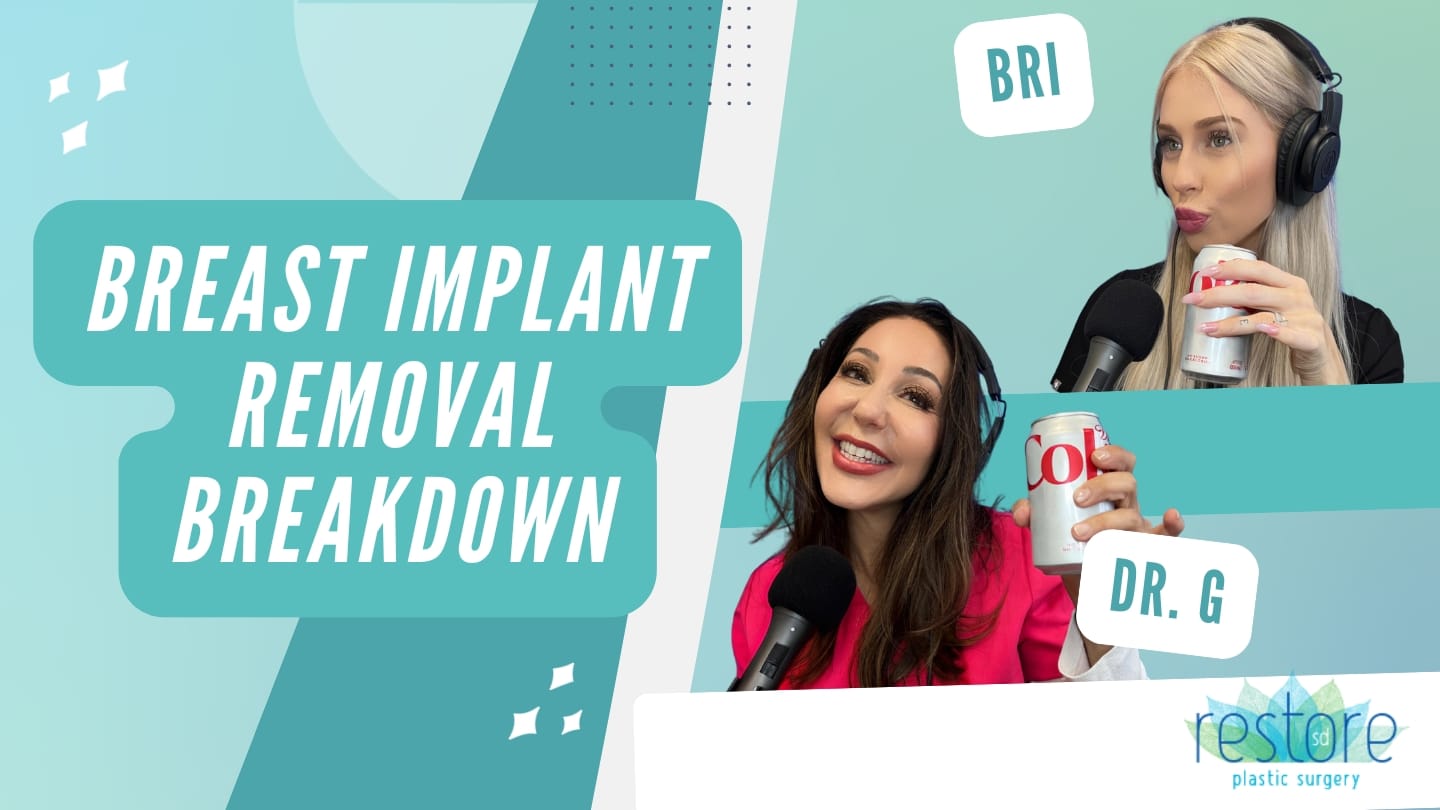 Podcast: Breast Implant Removal Breakdown by San Diego Female Plastic Surgeon
Podcast: Breast Implant Removal Breakdown by San Diego Female Plastic Surgeon Why Undergo Breast Implant Removal?
Why Undergo Breast Implant Removal?


